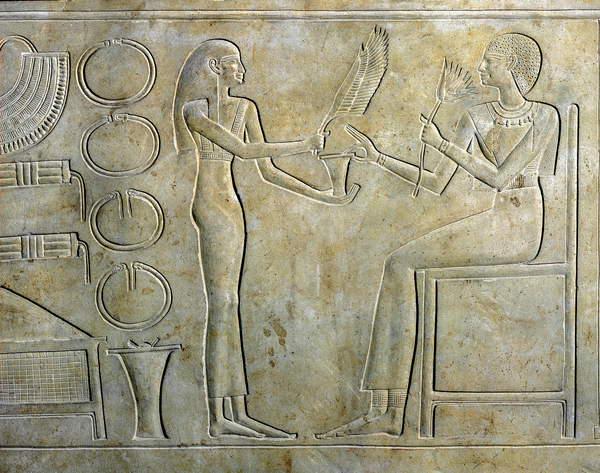The ancient world of Egypt has left us with countless marvels of art and architecture, and among these treasures is the extraordinary relief of Queen Kawit. Consort of King Mentuhotep II, Kawit’s sarcophagus relief stands as one of the finest surviving examples of low-relief sculpture from the Theban court. Discovered in her tomb (DBXI.9) at Deir el-Bahari in Thebes, this masterpiece dates back to Egypt’s Middle Kingdom, 11th Dynasty, around 2061-2010 BC. Today, the relief resides in the Egyptian Museum in Cairo (JE 47397), offering a rare glimpse into the art, culture, and royal life of one of ancient Egypt’s most significant periods.
The Artistic Elegance of the Theban Court
The relief beautifully captures Queen Kawit, reflecting not only her royal status but also the sophistication of the artistic traditions of the time. As the wife of King Mentuhotep II, who is often credited with reuniting Egypt after the First Intermediate Period, Kawit’s image is presented with delicate details and intricate craftsmanship. The fine execution of her features and attire is a testament to the skilled artisans of the Theban court, who achieved remarkable levels of artistry during the Middle Kingdom.

Queen Kawit’s portrayal in the relief emphasizes her elevated position within the royal court. The artist’s attention to detail in her clothing and jewelry, as well as the graceful, dignified posture, highlights her importance in Egyptian society. Unlike the common depictions of men, which often emphasized their power and authority, representations of women, particularly queens, were a means of showcasing their elegance, grace, and pivotal roles in royal governance. Kawit’s image thus not only immortalizes her beauty but also underscores the crucial role women played in the political and cultural stability of ancient Egypt.
Symbolism and Royal Ideals in the Middle Kingdom
This relief is not merely a representation of Queen Kawit’s physical form; it is also rich with royal symbolism. The relief features various hieratic motifs and divine iconography, reflecting the deeply ingrained religious beliefs of the time. In ancient Egypt, royal imagery was not just about capturing a likeness—it was about conveying divine favor and eternal legitimacy. The inclusion of symbols associated with gods and goddesses, as well as inscriptions that extol the virtues of the royal family, speaks to the powerful role of religion in supporting the monarchy. These artistic elements provide insight into the broader cultural and spiritual ideals of the Middle Kingdom.
The Middle Kingdom was a time of religious and cultural consolidation, and the relief serves as a visual record of these ideals. The reign of King Mentuhotep II marked a time of resurgence for Egypt after a period of political fragmentation. His reign, alongside the role of his consort, Queen Kawit, helped stabilize Egypt and set the stage for the flourishing of its later New Kingdom. The artistic production of this period, including works like the Queen Kawit relief, speaks to the skill and ambition of the Theban court, which became a center of artistic and intellectual achievement.
The Legacy of Queen Kawit and the Middle Kingdom
The Queen Kawit relief not only celebrates the beauty and grace of its subject but also provides a broader understanding of the Middle Kingdom’s legacy. This period saw the re-establishment of centralized power under Mentuhotep II, and the relief serves as a reminder of the cultural revival that occurred under his leadership. The Middle Kingdom, often considered a golden age of artistic achievement, produced some of the most exquisite art in ancient Egypt, and the Queen Kawit relief stands as a perfect example of the period’s artistic sophistication.
Moreover, the relief is a testament to the enduring influence of the Theban court, which would continue to shape Egypt’s artistic and cultural development. It is this very artistry that laid the foundation for the grandeur of the New Kingdom, Egypt’s most prosperous period. The Queen Kawit relief is not only a work of art; it is a historical document that reflects the power, grace, and cultural vibrancy of the Middle Kingdom.
Conclusion
The relief of Queen Kawit remains a remarkable work of art that continues to captivate scholars and art enthusiasts alike. Its exquisite craftsmanship, rich symbolism, and historical significance make it one of the most important surviving pieces from ancient Egypt’s Middle Kingdom. Beyond its beauty, the relief offers valuable insight into the political, cultural, and religious life of a period that laid the groundwork for Egypt’s future successes. The Queen Kawit relief stands as a timeless reminder of the enduring legacy of ancient Egypt’s artistic and royal traditions.

